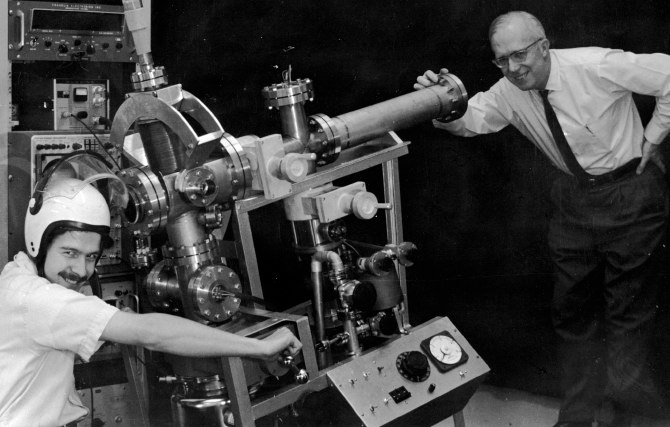
In 1967 E. W. Müller and J. A. Panitz introduced the Atom-Probe Field Ion Microscope at the 14th Annual Field Emission Symposium [4]. For the first time, an instrument became available that could “... determine the nature of one single atom seen on a metal surface and selected from neighboring atoms at the discretion of the observer [5].
The procedure is surprisingly simple. A needle-like sample called a Field Emitter is imaged in atomic resolution in the Field Ion Microscope. Then an atom in the image is selected for analysis by moving the tip until the image of the atom disappears over an aperture or probe hole in the FIM’s fluorescent screen. The probe hole provides the entrance to a time-of flight mass spectrometer. A DC voltage and a nanosecond pulse applied to the tip removes a surface layer of atoms by Field Evaporation. As a result, only the single atom positioned over the probe hole enters the mass spectrometer for analysis. A simple calibration procedure identifies the atom by its mass-to-charge ratio [5-8, 24].
Atom-Probe Field Ion Microscope anecdotes were published in 1998 [107] and the development of the Atom-Probe Field Ion Microscope was published in 2014 [122]. Play videos of its development at M&M 2017 and APT&M 2018.
Copyright © 1993-2025 J. A. Panitz. All Rights Reserved.
